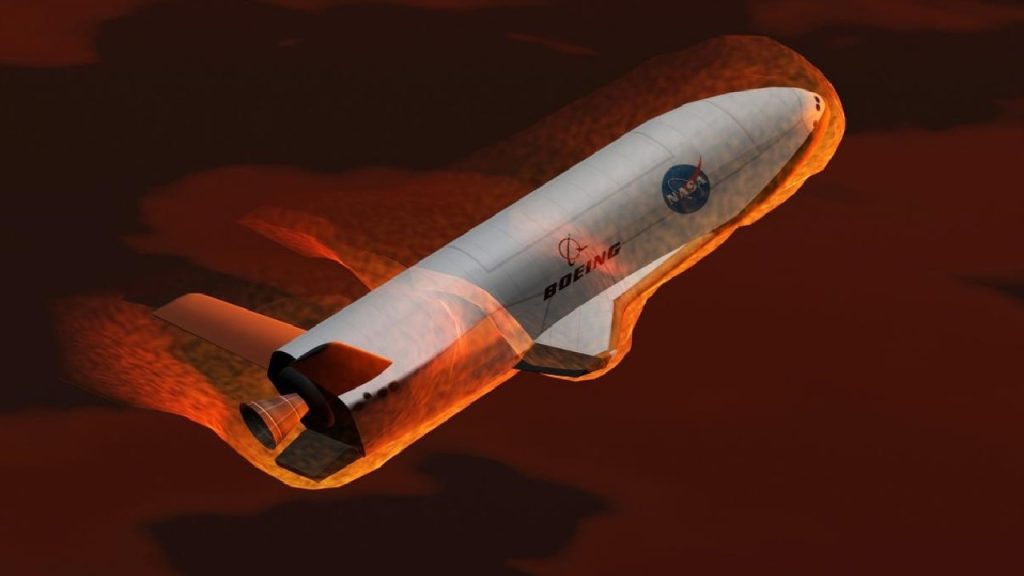The X-37B, commonly known as the Orbital Test Vehicle (OTV), is a reusable, unmanned spaceplane created by Boeing and operated by the United States Space Force.
This sophisticated spacecraft is engineered for prolonged missions in low Earth orbit (LEO) and is utilized for testing innovative technologies and conducting various scientific experiments.
The X-37B has attracted considerable interest due to its distinct abilities and potential military uses.
X-37B Overview
The X-37B is an enhanced version of the previous Boeing X-40, increased in size by 120%. It was originally developed by NASA in 1999 and handed over to the Department of Defense (DoD) in 2004.
The spacecraft is launched into space using rockets like the Atlas V or Falcon Heavy and returns to Earth as a spaceplane that lands on a runway. Its design is similar to that of the Space Shuttle, featuring an analogous aerodynamic shape and lift-to-drag ratio.
Military Interest in the X-37B
The OTV has not yet been employed to carry weapon payloads, yet it has multiple military applications. Primarily, it serves as a platform for testing new technologies in the harsh conditions of space. This includes experimenting with advanced materials, sensors, and propulsion systems.
Performing these tests in orbit allows the military to assess the performance and dependability of new technologies prior to their implementation in active systems. This capacity is essential for maintaining a technological edge in space and other areas.
Extending the United States’ Cosmic Influence
The X-37B is an essential asset for intelligence collection, as it can be fitted with various sensors and instruments for intelligence, surveillance, and reconnaissance (ISR) operations. Through its operation in low Earth orbit, it is capable of obtaining high-resolution imagery and data on targeted regions.
This data proves beneficial for military strategy and activities, providing immediate situational awareness and enhancing decision-making processes. Additionally, the spacecraft’s rapid launch and landing capabilities offer substantial value for swift deployment and retrieval missions, giving the United States Space Force the agility to quickly address emerging threats or capitalize on opportunities in space.
The Future of the X-37B Program
The X-37B program continues to evolve with each mission, building on past achievements. The seventh mission, which ended in March 2025, highlighted several new features, including an innovative aerobraking technique that leverages atmospheric drag to adjust orbits while conserving fuel, showcasing the spacecraft’s maneuverability.
Moving forward, the X-37B is set to play a vital role in the United States Space Force’s endeavors to achieve dominance in space. The initiative will likely maintain its focus on technology testing, enhancing space domain awareness, and other critical areas. Furthermore, the prospects for satellite servicing and ISR missions could be expanded, elevating its usefulness for military operations.
About the Author: Isaac Seitz
Isaac Seitz is a columnist for 19FortyFive on defense topics. He graduated from Patrick Henry College’s Strategic Intelligence and National Security program, has studied Russian at Middlebury Language Schools, and has experience as an intelligence analyst in the private sector.



